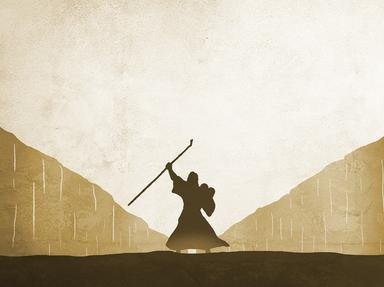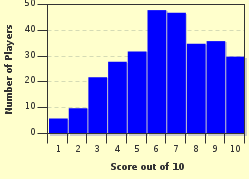Quiz Answer Key and Fun Facts
1. Shortly after Moses fled Egypt defending his oppressed brethren, he intervened again on behalf of the daughters of the high priest of Midian by protecting them from the other shepherds trying to drive them from the well. In Exodus 2:18, the high priest was referred to as Reuel, but later he was called by another, more familiar name. What was it?
2. Shortly after being provided miraculous provision from God in the form of the manna, the people once again complained, this time of thirst. To provide water for the people of Israel, God instructed Moses to take his staff and strike a rock, which God himself would stand upon. Where was Moses instructed to take the elders of Israel to show them God's might and provision yet again?
3. God again gave meticulous instruction in respect to the priestly garments. What two embellishments were to decorate the hem of the robe worn by the High Priest?
4. In Exodus chapter 35, Moses identified the man God had chosen to craft the things of the tabernacle and oversee the other artisans. What was his name?
5. On Mount Horeb, Moses tried to talk his way out of going back into Egypt despite God's assurance that He would be with him. God, angered by Moses' persistent lack of faith and disobedience, finally agreed to send someone with Moses to act as his spokesman. Whom did he pair Moses with?
6. In Exodus 17, we see the Israelites turn from slaves to warriors. By God's might, they saw their first victorious battle of many. What tribe was the first to oppose the Israelites?
7. If an Hebrew was sold into slavery in order to pay a debt, how many years was the maximum he had to serve?
8. When a sin offering was brought before the Lord, the priests would lay their hands upon the head of the bullock (steer) as an atonement for the sin of the priests. After killing the offering before the Lord, they were to offer up the blood, fat and caul to God. What was done with the flesh (meat) of the offering?
9. Upon the command by God through Moses, construction began on the Ark of the Covenant in Exodus chapter 37. What material does the KJV state that the Ark of the Covenant was made of?
10. The earliest form of an involuntary flat tax is found in Exodus chapter 30. This tax was a ransom or an atonement for the souls of the people and used for the service of the tabernacle. Rich or poor, a half shekel of silver was required as payment. Who were required to pay this tax?
Source: Author
dean521
This quiz was reviewed by FunTrivia editor
CellarDoor before going online.
Any errors found in FunTrivia content are routinely corrected through our feedback system.

